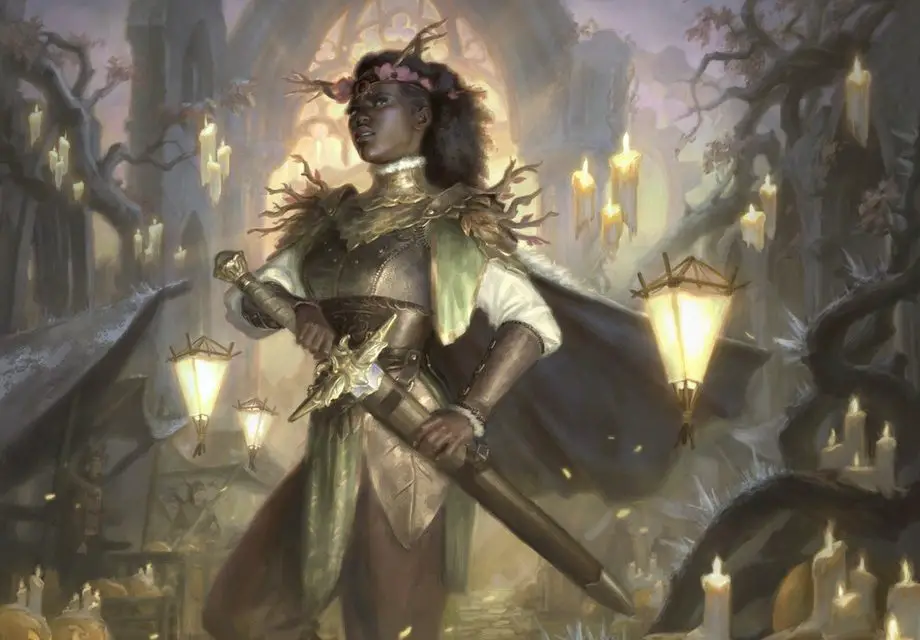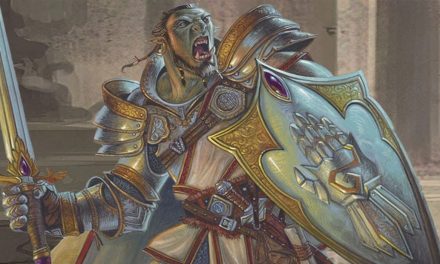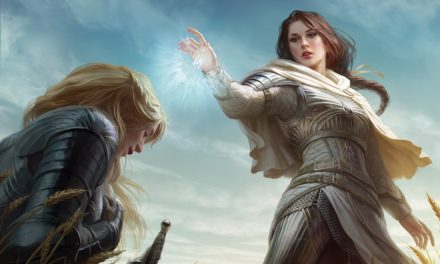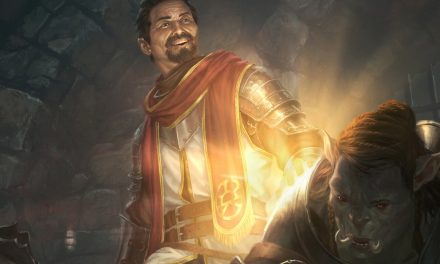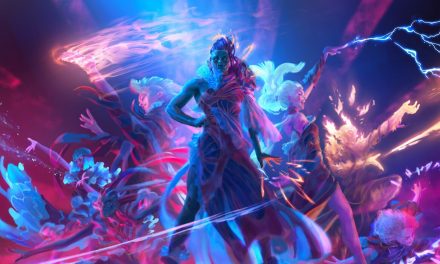Multiclassing in D&D 5e is a great way to make a character that is truly unique.
Perhaps your Barbarian wants to channel their rage through music and decides to take a few levels in Bard. Or maybe your Fighter begins to answer to a higher calling and begin walking the path of a pious Cleric.
By mixing and matching classes, there’s a virtually limitless number of ways you can build your character!
Though… it can be complicated and a tad overwhelming when you start juggling multiple classes like that…
But have no fear, dear reader!
This article will cover everything you need to know about multiclassing in D&D 5e!
What’s the Point of Multiclassing?
Let’s take it from the top with the all-important question: what’s the point of multiclassing?
There are two main answers to this question.
Firstly, it can be a way to create characters that are more efficient or optimized for a role than a standard single-class character might be.
For example, a player might want to play an incredibly tanky character.
While Barbarians can make for excellent tanks, the player wants to also add the Druid’s Wild Shape feature into the mix for even more hit points.
Secondly, it can be an interesting addition to the game’s narrative that shows how a character is evolving.
Perhaps the Barbarian was once fueled by an uncontrollable violent rage.
But as they’ve also begun walking the path of a Druid, they’ve been learning discipline and meditation. Now they can better harness that strength to defend those close to them.
Multiclassing Pros and Cons
Pros:
- Gain features from more classes
- More options for customization
- Can combine multiple class features for new/improved effects
- Better etch out a specific role in the party
- Gain new proficiencies
- Interesting storytelling potential
Cons:
- It can take longer to get certain mid-tier levels’ features and spells.
- You might miss out on high-tier levels’ features and spells entirely.
- Can be confusing to keep track of multiple classes’ features
- You might spread yourself thin and be too much of a generalist
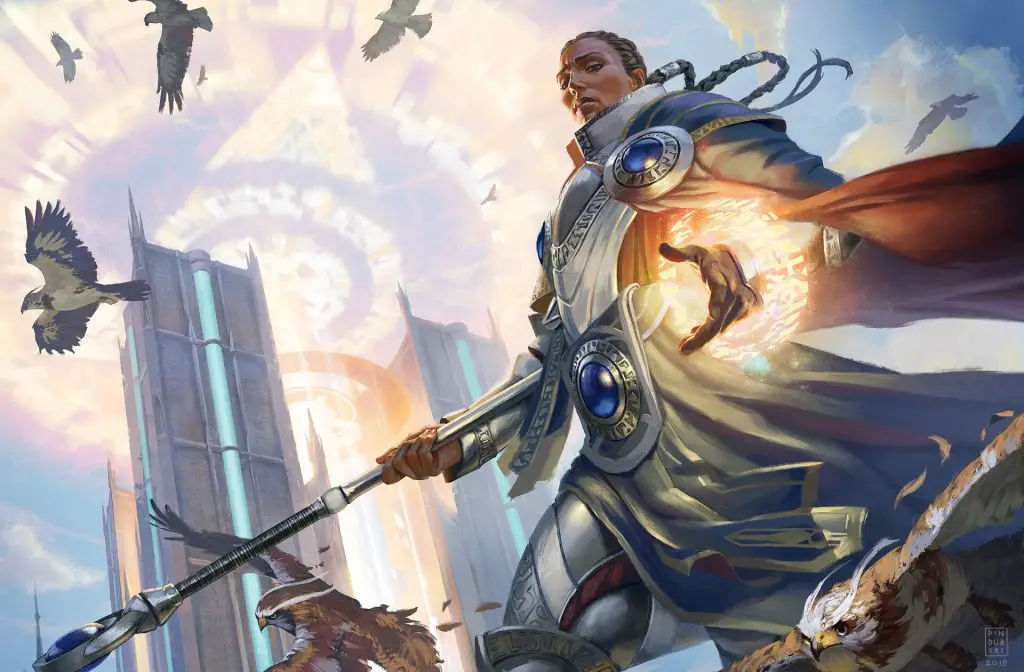
Multiclassing Requirements
Let’s start at square one with the important question: what do you need to multiclass in the first place?
Each class in D&D has a primary ability score that powers that class’s most important features. In fact, a few classes even have TWO such ability scores.
To start taking levels in a second class, you must first meet the minimum requirement of 13 for that class’s primary ability score.
If a class has two such ability scores, you will need at least a 13 in BOTH of those abilities. (This is the case for the Monk, Paladin, and Ranger classes.)
Fighters are a slight exception. You need to have a score of 13 in either Strength OR Dexterity to multiclass with the Fighter.
I’ll put the classes and their Ability Score requirements below.
| Class | Minimum Ability Score Requirement |
| Artificer | 13 Intelligence |
| Barbarian | 13 Strength |
| Bard | 13 Charisma |
| Cleric | 13 Wisdom |
| Druid | 13 Wisdom |
| Fighter | 13 Strength OR Dexterity |
| Monk | 13 Dexterity AND Wisdom |
| Paladin | 13 Strength AND Charisma |
| Ranger | 13 Dexterity AND Wisdom |
| Rogue | 13 Dexterity |
| Sorcerer | 13 Charisma |
| Warlock | 13 Charisma |
| Wizard | 13 Intelligence |
After all, you need to have some baseline level of ability if you want to start gaining levels in that class!
As funny as a Barbarian with 8 Intelligence trying to become a Wizard might be, it won’t exactly go well. The Barbarian will need to level up and boost their Intelligence to at least 13 first!
If you meet the minimum ability score requirement, you can begin taking levels in your chosen class!

The Effects of Multiclassing in D&D 5e
So, what exactly happens when you start taking levels in additional classes?
Well, the short answer is: A LOT!
Because of that, we’ll break it down into smaller pieces. My hope is that seeing the effect of multiclassing on each of these smaller pieces will help you see how they all connect when put together.
Let’s dive in!
Class Levels and Character Level
Typically, if you’re playing as a single-class character you might think that you have just one level. If Cedric the Ranger is level 3, you’d probably just say “I’m level 3.”
But you’ve actually had two levels this entire time: your class level and your character level!
So if Cedric the Ranger decides to multiclass and take a level in the Rogue class at level 4, we would want to make a distinction between these levels.
Cedric’s CHARACTER LEVEL would be 4. However, his CLASS LEVELS would be a level 3 Ranger and level 1 Rogue.
This distinction is important when it comes to many features and abilities.
For example, Cedric’s Sneak Attack damage would be calculated using his Rogue level and not his total character level.
This is also important to be aware of when it comes to your character’s experience points. You level up based on your total character level and total experience gained, not on your class levels.
Hit Dice
When you gain a level in a class, you add one die of that class’s Hit Dice size to your character.
This is used to determine how much HP you gain as well as how much you can recover when spending these dice during a short rest.
So, for example, let’s look back at Cedric the Ranger’s pool of Hit Dice.
He would have 3d10 from his Ranger levels since Rangers use a d10 for their Hit Die. Likewise, Cedric’s HP increases up to this point have been based on using a d10.
But he took a level in Rogue when he hit level 4.
Cedric’s HP increase at level 4 would instead be based on the Rogue class’s Hit Die, which is a d8.
Now Cedric’s pool of Hit Dice that he can use for recovering HP during a short rest consists of 3d10 and 1d8.
He can choose which dice he would like to spend when that time comes. However, he can’t swap them out. If he’s already spent his three d10s, he’s only left with a d8.
I recommend also checking out my article that goes into more detail about Hit Dice in D&D 5e.
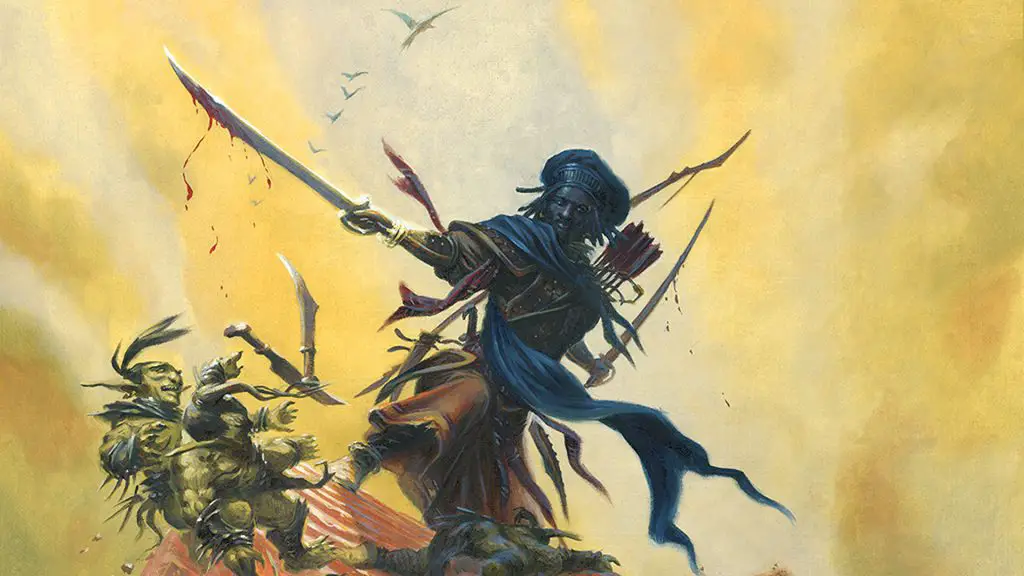
Proficiency Bonus
Your proficiency bonus is a very important thing to be mindful of. It affects nearly everything that you do from attacks to skills and even certain features!
Thankfully, your proficiency bonus is based on your character level and not on your class level.
| Character Level | Proficiency Bonus |
| 1-4 | +2 |
| 5-8 | +3 |
| 9-12 | +4 |
| 13-16 | +5 |
| 17-20 | +6 |
So, Cedric will still have the same proficiency bonus as his allies (assuming they’re the same character level.)
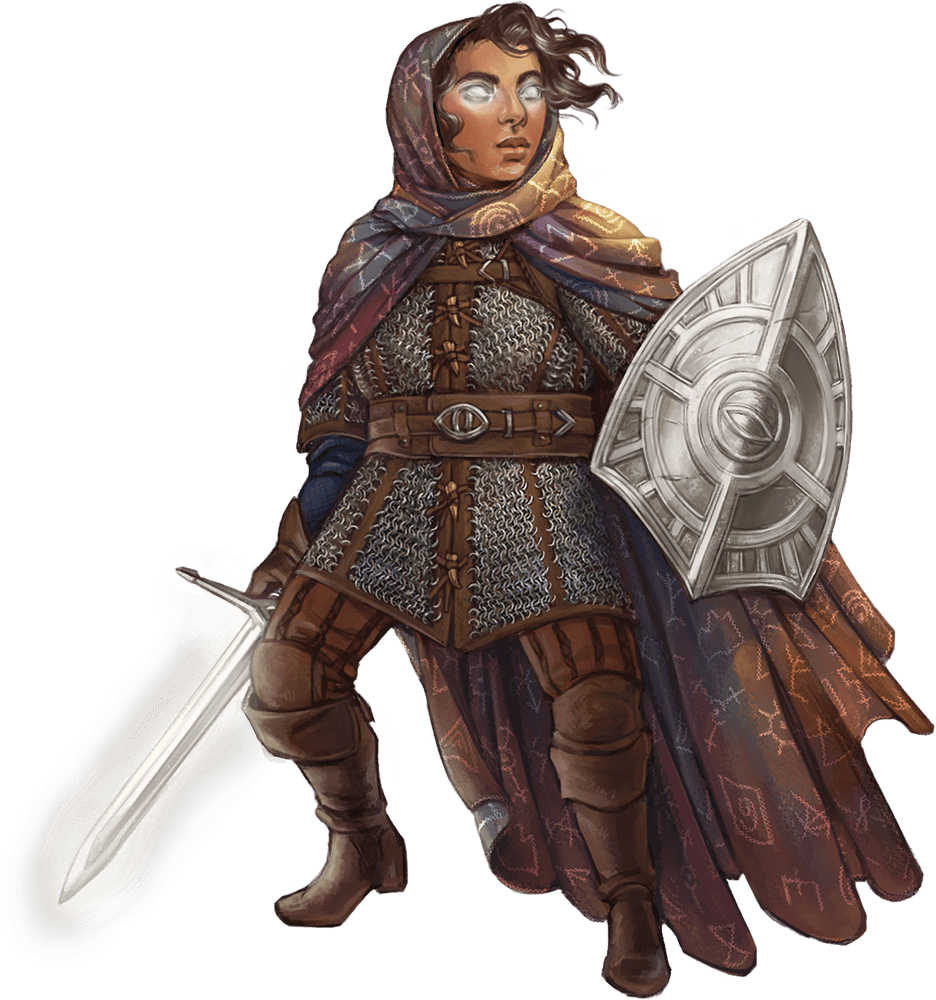
Proficiencies
When you multiclass, you’ll also be gaining new proficiencies if you don’t already have them. This is yet another appealing benefit of multiclassing!
Note that you won’t necessarily be getting EVERY proficiency that a normal level 1 character of that class will be getting. You’re only getting what you see on the class’s feature table.
For simplicity, I’ve got a table below that will show you what you gain from each class.
| Class | Proficiencies Gained |
| Artificer | Light armor, Medium armor, Shields, Thieves’ tools, Tinker’s tools |
| Barbarian | Simple weapons, Martial weapons, Shields |
| Bard | Light armor, 1 Skill of choice, 1 Musical instrument of choice |
| Cleric | Light armor, Medium armor, Shields |
| Druid | Light armor, Medium armor, Shields |
| Fighter | Simple weapons, Martial weapons, Light armor, Medium armor, Shields |
| Monk | Simple weapons, Shortswords |
| Paladin | Simple weapons, Martial weapons, Light armor, Medium armor, Shields |
| Ranger | Simple weapons, Martial weapons, Light armor, Medium armor, Shields, 1 Skill from the Ranger skill list |
| Rogue | Light armor, 1 Skill from the Rogue skill list, Thieves’ tools |
| Sorcerer | n/a |
| Warlock | Simple Weapons, Light Armor |
| Wizard | n/a |
It’s also worth noting that you won’t be gaining new saving throw proficiencies when you multiclass.
So, a Sorcerer who starts taking levels in Paladin would have proficiency in Charisma and Constitution from the Sorcerer class. However, they would not be gaining the Paladin’s proficiency in Wisdom saving throws.
Additionally, you don’t gain any benefits from gaining a proficiency twice.
For example, a Ranger multiclasses into Fighter and “gains” medium armor proficiency. Though they already have this from the Ranger class. You can swap out this redundant proficiency.
It works the same way with skills. However, there is an exception if it’s a skill you gain from your background. In that case, you’re able to swap it out for something else.
Class Features
When you gain a level in another class, you gain that class’s features as shown on their class features table.
So if Cedric the Ranger takes one level in the Rogue class, he would gain the Expertise, Sneak Attack, and Thieves’ Cant features.
When he later takes another level in Rogue, he then gains the Rogue’s level 2 feature, Cunning Action.
If you’re considering multiclassing, it’s always a wise idea to look at what low-level features you’ll be gaining by multiclassing into a class.
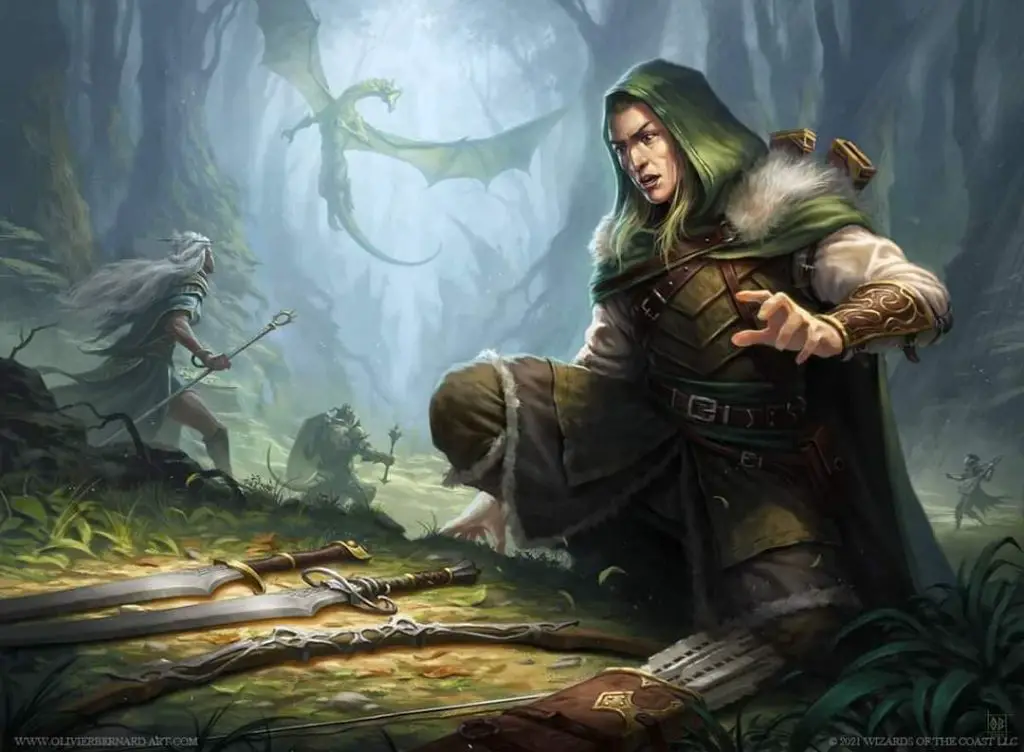
Un-Stackable Class Features
Some classes gain features that have the same name. It’s important to know that these features do not stack.
You need to pay very close attention to how these specific features are worded when you’re multiclassing.
The primary three “unstackable” features that you should be aware of are Extra Attack, Channel Divinity, and Unarmored Defense.
Extra Attack
Many classes gain the Extra Attack feature.
Note that Extra Attack specifically says “you can attack twice, instead of once, whenever you take the Attack action on your turn.”
So, if you have 5 levels in Fighter and 5 levels in Ranger, you would technically have the Extra Attack feature twice.
However, that does not mean that you’re getting to attack four times. You take the Attack action and are then able to attack twice with that action.
For Warlocks who choose the Pact of the Blade, be aware that this also applies to the Thirsting Blade Eldritch Invocation.
Though if you continue gaining levels in the Fighter class, you’ll get improved uses of Extra Attack which will let you attack more times.
Channel Divinity
When you’re taking both Paladin and Cleric levels, you’ll want to also be mindful of how Channel Divinity works with multiclassing.
Clerics can use their Channel Divinity once per rest until level 6 when they can use it twice per rest. At level 18, they can then use it three times per rest.
Paladins gain uses for their Channel Divinity at third level, though some Paladin subclasses give more options at later levels. Regardless, all Paladins can use their Channel Divinity once per rest.
When we put these together, we end up with something completely different. (Though honestly potentially more useful!)
Multiclassing with both Cleric and Paladin levels does not increase the number of times that you can use Channel Divinity per rest. However, it does expand the number of ways that you can use it!
Unarmored Defense
Classes like Monks and Barbarians get new ways to calculate their Armor Class with Unarmored Defense. While they don’t wear armor (and are actually better off without it!), they’re quick and tough enough to not be totally exposed.
But things can get weird if you’re multiclassing between the two classes…
Thankfully the ruling here is pretty simple: you can choose how to calculate your Armor Class.
In the case of Barbarians, it’s calculated using their Constitution and Dexterity. With Monks, this is based on their Wisdom and Dexterity.
While you can’t stack the two, you’re able to pick whichever one will benefit you the most!

Multiclassing and Spellcasting
It’s probably not surprising that spellcasting is the most complicated part of multiclassing.
But don’t let that intimidate you!
Once you see how it all fits together, it becomes much easier to handle. So, let’s break down how multiclassing works with spellcasting into easier pieces.
Gaining Spellcasting Through Multiclassing
We’ll start with a simple scenario.
Let’s say that our Fighter, Kaelynn, has decided to hit the books and start taking some Wizard levels. She has an Intelligence score of at least 13, so she meets the requirement to start taking these levels.
When Kaelynn gains her Wizard level, she gains the Wizard class features. Specifically, she’s gaining the Spellcasting feature which allows her to now cast spells and use a spellbook.
As a level 1 Wizard, Kaelynn can simply reference the Wizard class table in the PHB. That will tell her how many cantrips she can know and how many spell slots she has.
She follows all the rules for Wizards’ spellcasting as it relates to things like her Spell Save DC and how she can learn/prepare spells.
Gaining spellcasting through multiclassing is pretty straightforward!
Multiclassing Multiple Spellcasting Classes
Here is where things get tricky…
If both of your classes are spellcasters, you need to know which spells you are casting from each class.
This particularly matters when it comes to determining what your spellcasting ability is when casting a spell. It affects things like your Spell Save DC and your Spell Attack Bonus.
So if Stann the Cleric has also taken Wizard levels, he would need to know which of his spells use his Wisdom score (Cleric spells) and which use his Intelligence (Wizard spells).
If Stann casts Burning Hands as a Wizard spell, the spell save DC is calculated using his Intelligence.
Meanwhile, casting Guiding Bolt (a Cleric spell) would use Stann’s Wisdom to determine the Spell Attack Bonus.
Pretty easy so far, right?
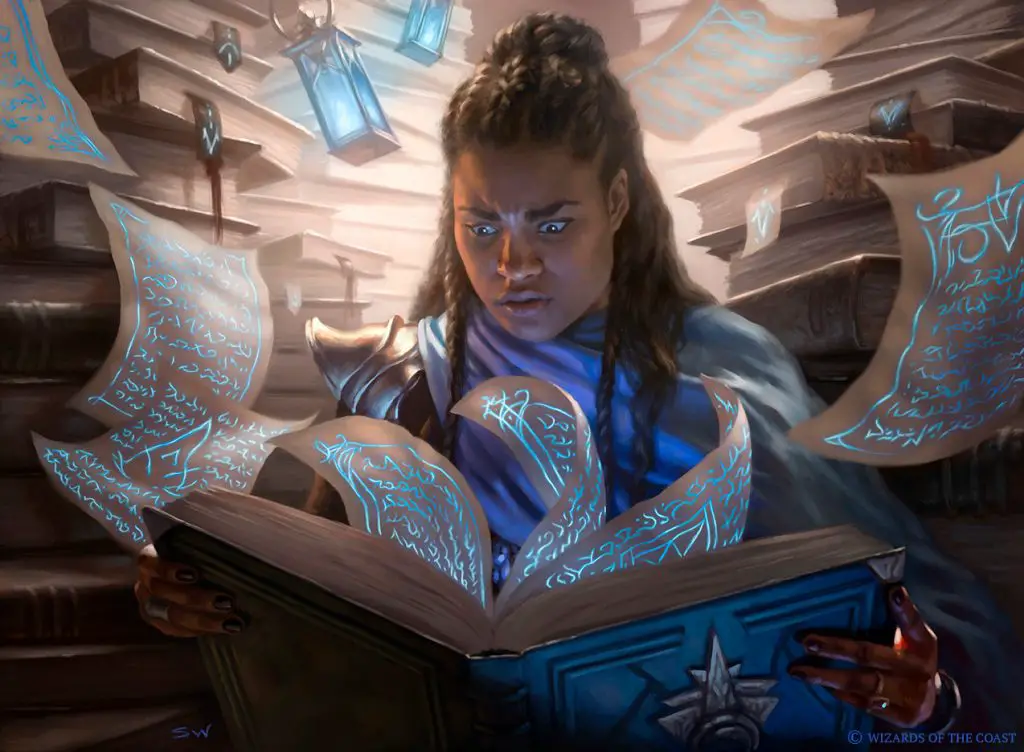
Spell Slots for Multiclassing Spellcasters
Now for the part that tends to scare people… calculating your spell slots!
Thankfully, it’s a simple calculation!
Your classes determine how many spell slots you will have. Though not all classes provide the same amount of spell slots in the calculation.
See below…
| Class | Add up… |
| Bard, Cleric, Druid, Sorcerer, Wizard | Total levels |
| Paladin, Ranger | Half your total levels, rounded down |
| Artificer | Half your total levels, rounded up |
| Arcane Trickster Rogue, Eldritch Knight Fighter | One-third your total levels, rounded down |
You’ll also notice that the Warlock class is missing here. That’s because their magic works differently. We’ll cover Warlocks in just a moment!
So, for a few examples:
- Cleric 1 / Wizard 2 = counts as level 3 (1 from Cleric, 2 from Wizard)
- Sorcerer 5 / Paladin 3 = counts as level 6 (5 from Sorcerer, 1 from Paladin)
- Bard 3 / Artificer 3 = counts as level 5 (3 from Bard, 2 from Artificer)
- 5 Ranger / 3 Paladin = counts as level 3 (2 from Ranger, 1 from Paladin)
- 5 Wizard / 3 Arcane Trickster Rogue = counts as level 6 (5 from Wizard, 1 from Arcane Trickster)
Now that we’ve figured out how many spell slots you’re getting, we use the Multiclassed Spell Slots table from the PHB.
| Level | 1 | 2 | 3 | 4 | 5 | 6 | 7 | 8 | 9 |
| 1 | 2 | – | – | – | – | – | – | – | – |
| 2 | 3 | – | – | – | – | – | – | – | – |
| 3 | 4 | 2 | – | – | – | – | – | – | – |
| 4 | 4 | 3 | – | – | – | – | – | – | – |
| 5 | 4 | 3 | 2 | – | – | – | – | – | – |
| 6 | 4 | 3 | 3 | – | – | – | – | – | – |
| 7 | 4 | 3 | 3 | 1 | – | – | – | – | – |
| 8 | 4 | 3 | 3 | 2 | – | – | – | – | – |
| 9 | 4 | 3 | 3 | 3 | 1 | – | – | – | – |
| 10 | 4 | 3 | 3 | 3 | 2 | – | – | – | – |
| 11 | 4 | 3 | 3 | 3 | 2 | 1 | – | – | – |
| 12 | 4 | 3 | 3 | 3 | 2 | 1 | – | – | – |
| 13 | 4 | 3 | 3 | 3 | 2 | 1 | 1 | – | – |
| 14 | 4 | 3 | 3 | 3 | 2 | 1 | 1 | – | – |
| 15 | 4 | 3 | 3 | 3 | 2 | 1 | 1 | 1 | – |
| 16 | 4 | 3 | 3 | 3 | 2 | 1 | 1 | 1 | – |
| 17 | 4 | 3 | 3 | 3 | 2 | 1 | 1 | 1 | 1 |
| 18 | 4 | 3 | 3 | 3 | 3 | 1 | 1 | 1 | 1 |
| 19 | 4 | 3 | 3 | 3 | 3 | 2 | 1 | 1 | 1 |
| 20 | 4 | 3 | 3 | 3 | 3 | 2 | 2 | 1 | 1 |
Let’s now return to the examples we listed above:
- Cleric 1 / Wizard 2 = level 3 = 4 first-level slots, 2 second-level slots
- Sorcerer 5 / Paladin 3 = level 6 = 4 first-level slots, 3 second-level slots, 3 third-level slots
- Bard 3 / Artificer 3 = level 5 = 4 first-level slots, 3 second-level slots, 2 third-level slots
- 5 Ranger / 3 Paladin = level 3 = 4 first-level slots, 2 second-level slots
- 5 Wizard / 3 Arcane Trickster = level 6 = 4 first-level slots, 3 second-level slots, 3 third-level slots
Spell Slots for Spell Levels You Can’t Learn
Note that you might actually end up with spell slots for spell levels that you can’t cast from one of your classes yet.
For example, a Sorcerer 5 / Paladin 3 character won’t be able to take Paladin spells above the first level until they hit level 5 and can start learning level 2 spells from the Paladin list.
Meanwhile, something like a Ranger 4 / Sorcerer 3 would have level 3 spell slots, but they don’t actually know any 3rd-level spells.
In that case, the character could upcast a spell like Chromatic Orb using a 3rd level spell slot, but they wouldn’t know any actual 3rd level spells.
Once again, keep track of what your spells are and where you’re getting them from!
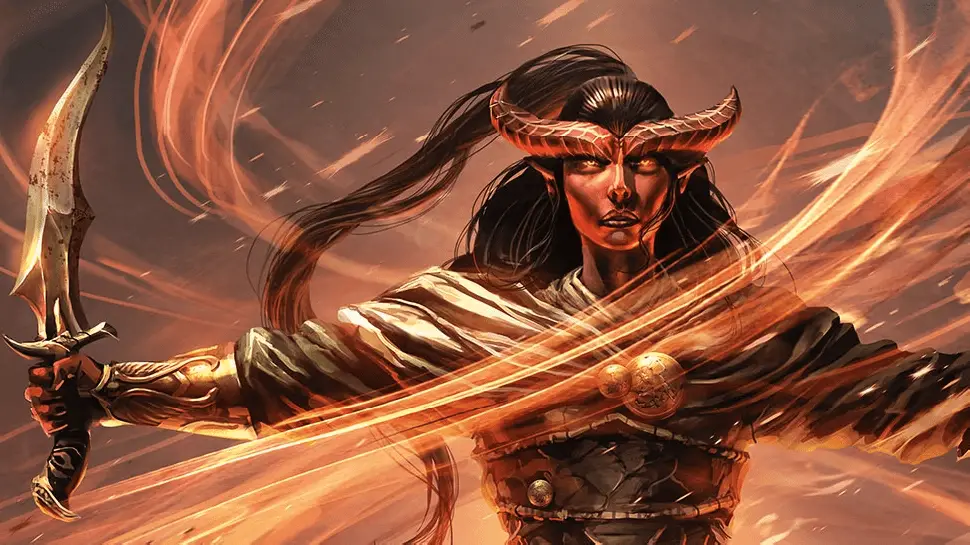
Warlock Pact Magic and Multiclassing
Finally, we arrive at the Warlock.
Warlocks’ magic isn’t like that of other classes and tends to play by a slightly different set of rules.
If you haven’t already checked out my Warlock Class Guide, I’d recommend doing so. That article goes into more detail about how Warlock spellcasting works.
For now, let’s talk about how the Warlock’s Pact Magic works with multiclassing.
Warlocks have a set number of spell slots and cast spells using their “Pact Magic” feature instead of the usual “Spellcasting” feature. This means they don’t really factor into the spell slots equation we covered earlier.
But the entities that have the power to make deals with potential Warlocks certainly know how to sweeten the deal!
If you multiclass as a Warlock with another spellcaster class, you get both the Pact Magic and Spellcasting features.
Having both of these allows you to use your Pact Magic spell slots to cast spells that you know or have prepared with the Spellcasting feature instead.
It also works the other way around and allows you to use Spellcasting spell slots to cast Warlock spells!
Being able to use Warlock spell slots to cast another class’s spells (and vice versa) can make for some crazy efficiency if used well.
It’s hard to blame a Wizard or other spellcaster for taking a Warlock Patron when this kind of power is part of the deal, eh?
Cantrips
You’ll commonly gain cantrips from your class. Though you might also gain some from your character’s race, feats, or other sources.
While many of these provide some useful utility, there are also plenty of reliable damage options as well.
For damaging cantrips like Sacred Flame that increase in damage as you level up, remember that these level up with your CHARACTER level and not your class level.
So, if Stann the Cleric has 3 levels in Cleric and 2 levels in Wizard, his use of Sacred Flame would still get the damage increase that comes with being level 5.
Meanwhile, if Bjorn the Barbarian decides to take a Bard level at level 17, he’ll be using Vicious Mockery as a 17th-level character for 4d4 damage instead of 1d4.
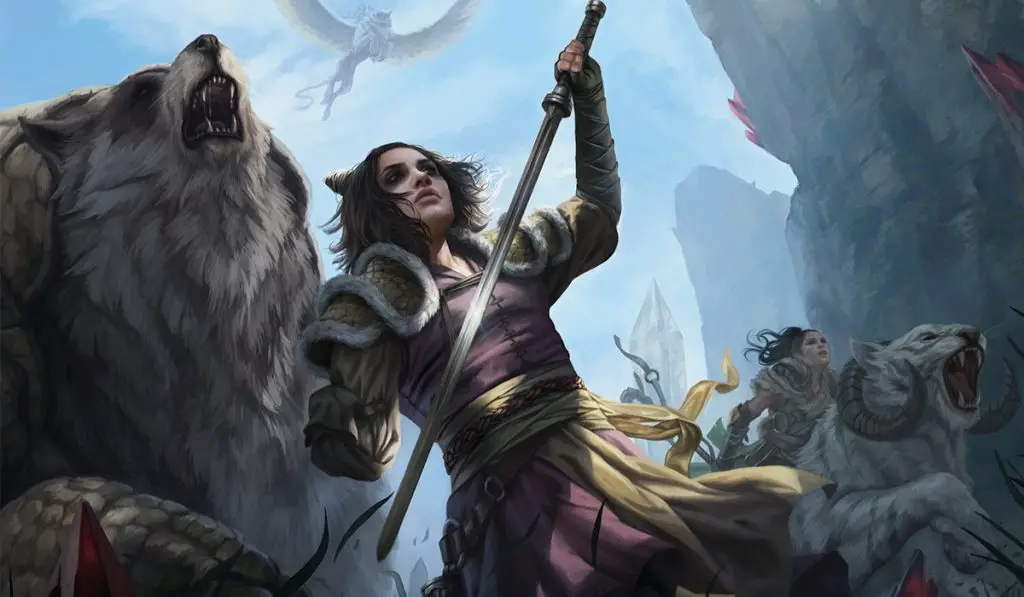
When Should You Multiclass?
Technically you could start multiclassing right from level 2 if you meet the ability score prerequisites.
Ultimately, there truly is no “absolute” answer to when the right time to multiclass is. The discussion becomes a question of “could” or “should.”
Could you multiclass at level 2? Yes.
Should you multiclass at level 2? It depends…
However, there are at least a few general guiding principles that are worth going over. This will help you get a better idea of when you should consider multiclassing.
You don’t have to abide by these principles, but they are at least worth being aware of!
Don’t Skip Important Features
First things first, make sure that you’re gaining enough levels in a class to get their most important features.
If you start multiclassing before then, you can quickly find yourself lagging behind the rest of the party.
The best example of this is martial characters gaining Extra Attack at level 5.
The impact of Extra Attack is so strong and is such a leap forward in terms of power that it’s incredibly difficult to pass up. If you’re looking to play a martial multiclassed character, you would still want to get Extra Attack as soon as you possibly can!
For spellcasters, this is also important.
Depending on your character and party composition, it might be worth holding off on multiclassing for an extra level so that you can get one of your bigger spells.
For example, a Sorcerer might still want to hit level 5 before multiclassing so that they can still grab the Fireball spell.
In fact, you probably shouldn’t multiclass before reaching level 5 in any class. The jump to level 5 is such a big power jump that you won’t want to miss that unless you have a REALLY good reason.
Ability Score Increases and Feats
Depending on what classes you choose and how many levels of each you’re taking, you can end up getting an incredible amount of Ability Score Increases or potentially none at all!
These ASIs and Feats are incredibly important to how your character performs overall.
Recommended: Feats in D&D 5e Explained + Recommendations
I mean, what is a Wizard who doesn’t continue to grow their Intelligence? What about a Bard who doesn’t invest in their Charisma?
Or what about instead taking feats instead of ASIs that will greatly expand what your character is capable of?!
While you can start multiclassing before your first ASI (typically at level 4), I’m slow to advise that.
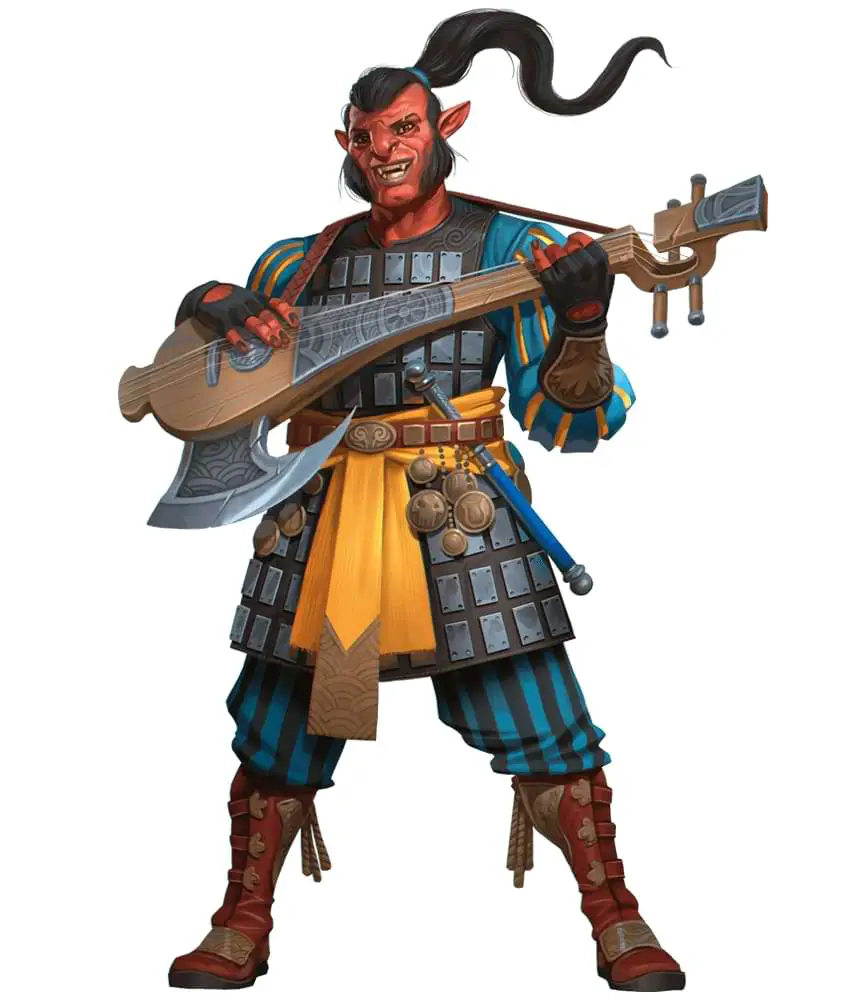
Roleplaying a Multiclassed Character
If you’re playing a multiclassed character, I would encourage you to find ways to incorporate that into your character’s story.
It’s an excellent way to show how your character is growing, evolving, or otherwise changing within the narrative. Not to mention, it can also make for an interesting hook for further building out your character.
The Wizard, perhaps in a moment of weakness, accepts a deal that is offered to them by some powerful otherworldly entity promising them further knowledge.
What else would the Wizard sacrifice for knowledge or do they think they can outsmart this entity?
Meanwhile, the Bard has grown tired of a life of debauchery and has found new meaning in the local temple.
Taking levels in Cleric, the Bard aims to walk the “straight and narrow” while using their charm to similarly inspire others.
I have plans to publish an article at some point that will go into more details about roleplaying a multiclassed character. Let me know in the comments if that’s something you’d like to read.
But I wanted to at least touch on this aspect to get you thinking about ways to include that in your game.
Maybe you found a mentor to teach you in the ways of your chosen class.
Perhaps your character did some sincere soul-searching or had a change of heart due to in-game events. (This is especially good if you’re wanting to start multiclassing with the Cleric, Druid, Monk, or Paladin classes.)
It will add much more depth than simply saying “My character just woke up and was suddenly favored by the deity that they’ve never prayed to or talked about.”
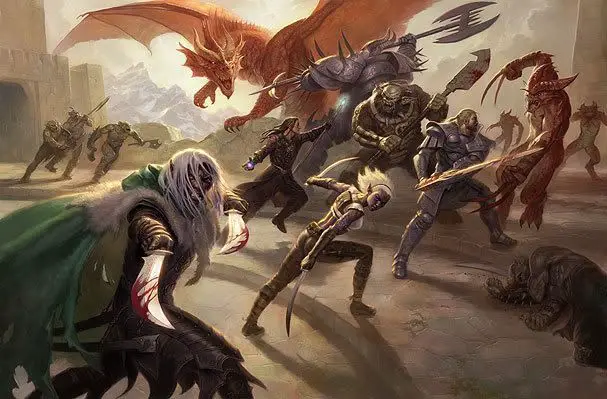
Should You Multiclass?
Multiclassing is a big decision for both you and your character. It’s not one to be taken lightly and you’ll want to make sure you’ve given some thought to it!
There are a few things that you should consider when deciding whether or not your character should multiclass.
Multiclassing Can Be Complicated
As you’ve seen by this point, multiclassing can be very complicated. A lot more goes into building and playing a multiclass character than a single-class character!
I especially see this a lot with newer players who get excited at just how many options there are in D&D 5e.
For newer players especially: learn to play one character class before you try to play two.
Once you have a solid grasp of how D&D 5e works, you’ll be in a much better position to play a multiclassed character without getting overwhelmed.
DM Discretion
Branching off the last point, always check with your DM if you’re considering multiclassing.
If they don’t believe you are ready to play a multiclass character, they might advise you to stick with a single-class character.
Remember: your DM is juggling a lot of things while running the game. They’ll likely have a difficult time helping you out (at least not without getting frustrated at having to pause the game.)
Of course, they might also be a newer DM who is still learning how to build encounters. This gets even trickier when there are multiclassed characters in the party.
Finally, the DM might want to make sure that any multiclassing makes sense within the story. In that case, work together to figure out something that’s fun and makes sense.
What Do You Specifically Gain from Multiclassing?
Of course, there is also the biggest consideration when deciding if you should multiclass or not…
Sometimes a multiclass character might sound interesting in concept but be different in practice.
Despite all of the individual parts being good, they might combine to make something that just doesn’t work as well as you would have hoped!
When building a multiclass character, look for what kind of synergies you’re specifically gaining. What does this multiclass provide that a single class/subclass doesn’t?
Common things to look to gain from multiclassing include:
- improving your combat performance
- spellcasting
- increased armor class
- more efficient action economy
While it’s an extreme example, just see what I mean in this video from Puffin Forest. (This is still one of the funniest videos I’ve ever seen.)
Multiclassing Example – Putting It All Together
Ok, so there are a fair number of moving parts to multiclassing a character. But don’t let that intimidate you!
Let’s now put everything that we’ve covered together and see what Multiclassing looks like in practice. For that, we’ll be looking at our friend, Cedric the Ranger.
In combat, Cedric prefers to wield his trusty longbow and pick off enemies from a distance.
However, he thinks that taking some levels in the Rogue class will let him deal more damage with Sneak Attack. Additionally, it will also provide some extra utility for the party while dealing with traps.
| Levels | Notes |
| Ranger 1 | Cedric is a level 1 Hill Dwarf Ranger and uses the standard starting equipment. He takes the Outlander background (giving him proficiency in Athletics and Survival) and prioritizes his Dexterity and Wisdom ability scores. From the Ranger class, he also takes proficiency in the Stealth, Perception, and Investigation skills. |
| Ranger 2 | Cedric takes another Ranger level and chooses the Archery Fighting Style. He gains HP based on his d10 hit Die from the Ranger class. |
| Ranger 3 | Cedric takes another Ranger level and chooses the Gloom Stalker Ranger subclass. He gains HP based on his d10 Hit Die from the Ranger class. |
| Ranger 4 | Cedric takes one more level in Ranger because he wants to take the Sharpshooter feat. He gains HP based on his d10 Hit Die from the Ranger class. |
| Ranger 4 / Rogue 1 | Because Cedric meets the ability score requirements, he takes 1 level in Rogue. He gains proficiency in the Acrobatics skill from the Rogue class. He uses the Rogue’s Expertise feature to double his proficiency bonus with Stealth and his newly acquired Thieves Tools proficiency. He gains HP based on his d8 Hit Die from the Rogue class. |
| Ranger 4 / Rogue 2 | Cedric gains another Rogue level. He gains HP based on his d8 Hit Die from the Rogue Class. |
| Ranger 5 / Rogue 2 | Cedric realizes he needs another level in Ranger to gain Extra Attack. He takes a level in Ranger to gain that feature alongside more HP from the Ranger’s d10 Hit Die. |
| Ranger 5 / Rogue 3 | Cedric gains another Rogue level and chooses the Scout Rogue subclass. He gains HP based on the d8 Hit Die from the Rogue class. |
| Ranger 5 / Rogue 4 | Cedric takes another level in Rogue. He uses his Ability Score Increase to increase his Dexterity and Wisdom each by 1. He gains HP based on the Rogue’s d8 Hit Die. |
| Ranger 5 / Rogue 5 | Cedric takes another level in Rogue to further increase his Sneak Attack damage. He gains HP based on the Rogue’s d8 Hit Die. |
| Ranger 5 / Rogue 5 / Monk 1 | An encounter with a Martial Arts Master makes Cedric want to learn the art of unarmed combat. He studies under the Master, confirms that he meets the ability score requirements to multiclass further, and gains a level in the Monk class. He gains HP based on the Monk class’s d8 Hit Die. While he doesn’t gain any new skill proficiencies, he does gain the Unarmored Defense and Martial Arts features from the Monk class. |
Now that I think about it, Cedric could be an interesting character to play with a little bit of tweaking…
But anyhow…
Hopefully this helps you see how all this fits together now.
FAQs – Multiclassing in D&D 5e
As we come to the end of this article, I want to answer some more common questions about Multiclassing.
If you still have questions about multiclassing in D&D 5e, feel free to reach out in the comments. I’m always happy to help!
Is Multiclassing Good in D&D 5e?
All in all, I’m a fan of how multiclassing works in D&D 5e.
While there are a lot of things to be mindful of, it makes sense once you see how all of the individual parts work and fit together.
It’s certainly not as confusing and technical as in previous editions.
As for whether or not multiclassing is good for YOU, it’s actually difficult to give a blanket answer.
If you’re a newer player, I would advise you to not worry about multiclassing until you’re more familiar with how 5e works.
As we covered earlier in the article, you need to get comfortable playing one class before you try to play two!
Additionally, keep those guiding principles we covered in mind too.
What will you specifically gain from multiclassing? What does it actually do for your character and for your role in the party?
How Many Times Can You Multiclass?
As long as you meet the minimum ability score requirements for each class, you can multiclass as much as you would like.
Just also be prepared to give a backstory that would explain why and how it’s happened though!
Would I advise you to take a level in all 13 classes?
Funny as it would be, the answer is no.
While you can multiclass as much as you would like, you want to still have a character that… you know… works…
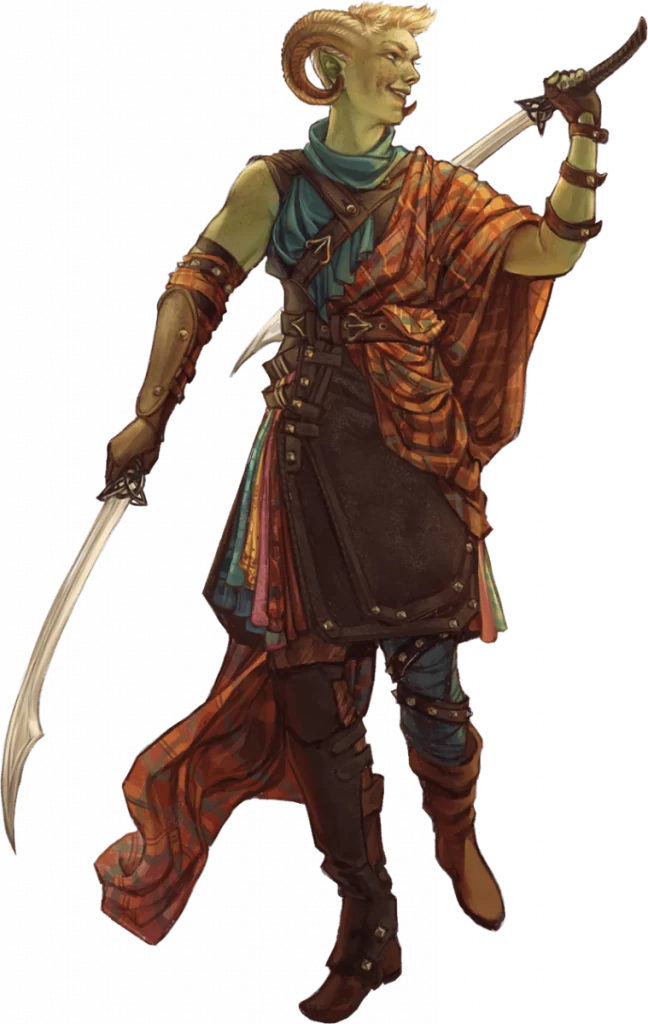
Can You Take Multiple Subclasses?
No. You cannot multiclass into the same class to take multiple subclasses.
So, if Cedric the Ranger chose the Gloom Stalker subclass, he is stuck with that subclass unless the DM lets him remake his character.
He cannot be a Gloom Stalker and then also take something like the Drakewarden subclass.
However, if he wants to focus on ambushing people but also wants a pet drake, the DM might potentially let him remake his character.
He could then be a Drakewarden Ranger who multiclasses into the Rogue class and takes the Assassin Rogue subclass.
While it’s not the same as the Gloom Stalker, it might be similar enough to what Cedric is envisioning that he can make it work.
Should You Allow Multiclassing in Your Game?
Even for veteran DMs, multiclassing can be confusing. There are a lot of moving parts to be mindful of!
This can be especially tough if the player that is multiclassing is getting confused too. Now the DM needs to “reverse engineer” their character to figure out what’s happening.
With the DM already having to juggle everything that goes into running the game, it can get frustrating. Particularly if it’s happening in the middle of the game!
Ultimately, it is up to the DM if multiclassing will be allowed in the game.
I’d certainly recommend covering it when you’re running your Session Zero. (You ARE running a Session Zero, right?)
A few considerations for DMs that are wondering if they should allow multiclassing:
- Does the player have a reasonable working knowledge of how to play D&D 5e? (i.e., is this their first character or more like their fifth, tenth, or thousandth…)
- Do YOU have a reasonable working knowledge of how to run games in D&D 5e? (i.e., are you a new DM that’s about to get steamrolled by a min-maxxed multiclass character?)
- Are you comfortable enough with multiclassing rules that you can advise the player if they need?
- Is this something that adds to the story? Subtracts? Neither?
Remember: as the DM, there is no shame in saying that you just aren’t comfortable running a game with multiclass characters at this time.
After all, multiclassing is optional!
Just be proactive and try to figure out what exactly your player that wants to multiclass is trying to go for. As the DM, you can work together and try to find something that works.
Conclusion – Multiclassing in D&D 5e
I did not intend for this article to be so huge, but what can I say? There are a lot of “fine points” that go into multiclassing in D&D 5e!
As always, I hope you’ve found this guide to multiclassing helpful.
Got questions I didn’t answer or an awesome multiclassing concept you’d like to share? Let’s chat in the comments!

